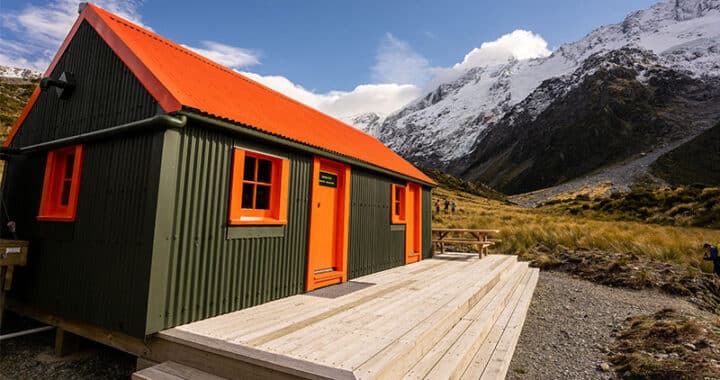Jobs for Nature funding to support pest eradication projects
3 min read
The Farewell Spit/Wharariki project already has significant community support with habitat restoration and predator control work previously carried out. Photo: Naomi Aporo
More than $6 million in Jobs for Nature funding is being made available to support three iwi-, community- and council-led projects targeting the eradication of rats, stoats, and possums as part of the Predator Free New Zealand 2050 mission.
The three projects in the Kaipara Harbour peninsulas, Farewell Spit/Wharariki, and Kawau Island are currently in the planning stages, with any fieldwork starting mid-2022 and expected to be completed in 2026, Predator Free 2050 Ltd (PF2050 Ltd) said.
“These are three particularly promising landscape-level projects, and we hope this anchor funding provides the confidence for other partners to invest and get involved. Should all go ahead as planned, they are forecast to create more than 100 jobs,” said David Macleod, acting chair, PF2050 Ltd.
“The support we already have from iwi and hapū, the community, and councils for these projects is awesome. PF2050 is a really ambitious goal, and that sort of local leadership will be key to our eventual success.”
The $4.85 million Kawau Island project will be led by Auckland Council, working with Ngāti Manuhiri, the Pohutukawa Trust, the Department of Conservation (DOC), and other partners. PF2050 Ltd will fund $1.3 million with Auckland Council, DOC, and other partners funding the rest. While PF2050 will work to eradicate rats, stoats, and possums, the Council will also target wallabies, first introduced to the island by Governor Grey. The first stage of the project is forecast to create 23 jobs.
Kawau is one of the last remaining islands in the Hauraki Gulf Marine Park with predators.
Read more: Hunter education boost from Jobs for Nature
Read more: New wetland project aims to restore Lake Horowhenua
The Kaipara project will be led by a group of local iwi and hapū. The forecast project budget for the key peninsulas is $30 million and PF2050 Ltd will anchor the project with an initial $2 million. Alongside PF2050’s efforts targeting rats, possums, and stoats, local iwi and hapū have acknowledged the damage caused by feral pigs in the catchment, and requested they be eliminated too.
The Kaipara project would initially focus on 105,000 hectares around the peninsula and harbour area, expanding to 640,000 hectares as technology being developed to support the PF2050 goal allows. That area extends south of Whangarei to Helensville and much of the west coast in between. The initial phase of the project could create up to 36 full-time jobs.
The Farewell Spit/Wharariki project, to be community-led by the Tasman Environmental Trust and HealthPost Nature Trust, already has significant community support with habitat restoration and predator control work previously carried out.
Farewell Spit is an internationally recognised environmentally significant area for migratory birds and its biodiversity value and a culturally significant area for local iwi. It is also a defendable geography and serves as an anchor for that part of the South Island. Over time, other work will move towards the Abel Tasman National Park and south to Kahurangi and the West Coast.

Aerial view of Kawau Island. Photo: Supplied 
Aerial view of Kaipara Harbour. Photo: Supplied
PF2050 Ltd has committed to fund $3 million of the $9 million cost, with the remaining $6 million to be raised by other partners. Should it progress, the project is forecast to create up to 50 jobs.
“These are big, novel projects that have the benefit of taking on the lessons of the work already being done. We know a lot more about what eradication methods work and what don’t in different environments than we did even five years ago,” Macleod said.
“PF2050 projects are strongly connected to science-led research and development efforts to provide the tools needed to succeed at a landscape scale. Ultimately, over time these and other landscape-scale projects are going to connect, creating large predator-free areas, resulting in significant benefits for our natural environment and native species.”



